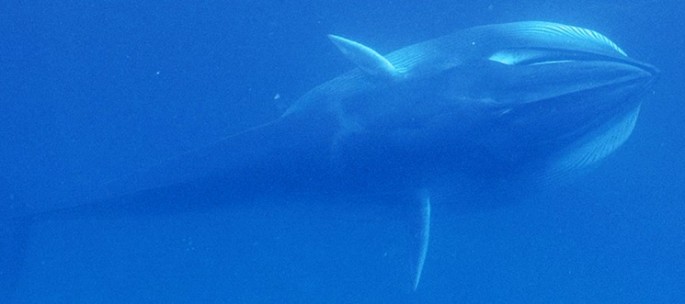The world's rarest whale known as Omura's whales have apparently been captured on film for the first time ever by an international team of scientists. The team shortly released a video and the first images of the elusive, colossal creatures that are swimming free in the oceans today.
The team is led by Salvatore Cerchio of the Woods Hole Oceanographic Institution along with the New England Aquarium where they gathered observations and analyzed them based on the Omura's whales vocalizations, habitat preferences including feeding and foraging methods, as they discovered this extremely rare populations near the Madagascar coast.
The whales were named after the Japanese cetologist Hideo Omura as only little is known about this extremely elusive whale species. Much of the information about the creatures came from a 2003 study by Japanese scientists where they determined the existence of this species by examining mitochondrial DNA of some few specimens that has been mistakenly identified as Bryde's whales.
However, this recent sighting in Madagascar is the first conclusive evidence of the existence of the Omura's whales that also provided crucial information about the whales' behavior in the wild.
At first, Cerchio's team was surveying dolphins near Madagascar in 2011 when they spotted three unfamiliar whales. The team immediately thought they were Bryde's whales but in 2012, the team observed four more of the unique whales in the same region.
The team then searched deeper waters in 2013 where they discovered 13 more unidentified whales that included a mother and her calf. The team initially though that they found a new whale species however, after some tests, it was confirmed that they were indeed Omura's whales. In 2014, the team had a total of 44 whale sightings including documentation.
In this new study, researchers discovered that the Omura's whales possessed long and narrow bodies that are built for swimming rapidly underwater. Their physical attributes include asymmetrical coloration, where they are darker on one side and lighter colored on the other. The whales also appear to have light and dark stripes and patches across their bodies which makes them individually unique.
To date, the population numbers of the whales remain unknown however, Cerchio believes that the whales could be exposed to danger from noise pollution that travels underwater triggered by industrial developments.
Cerchio adds that human generated noise is apparently a pervasive threat in the world's oceans, however effects on marine animals are hard to detect. His team will continue their study to obtain a clearer estimated of the Omura's whale populations found in the Madagascar cluster.
This new study is published in the Royal Society Open Science journal.



























